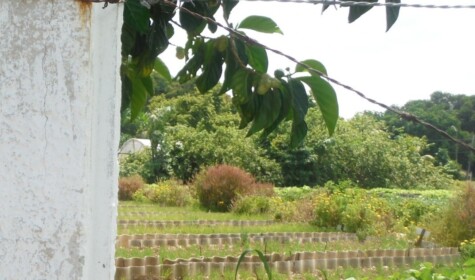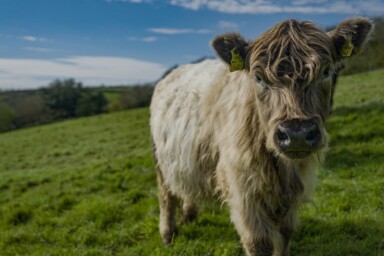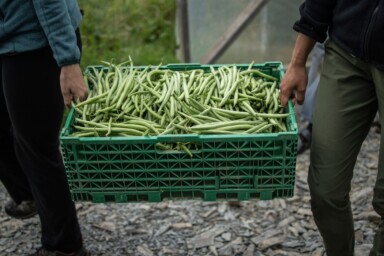Urban farming has gained momentum in recent years as a result of increased awareness of environmental issues and the desire to feed people living in cities sustainably. For Cuba in the 1990s, however, the shift to an urban agricultural economy was a matter of life or death.

The Plaza de la Revolución is supposed to embody the spirit of revolutionary Cuba. Dominated by a large mural of Che Guevara and a monument to Cuban national hero José Martí, this site is dedicated to the ideals upon which this communist state was founded.
But strolling through the Plaza – a long stretch of grey concrete scattered with hordes of tourists taking selfies – the principles of these iconic men seemed absent in the rather bleak town square, empty of the hundreds of thousands of Cubans that used to fill it in the days of the revolution. It took a short walk around the corner from the Plaza into one of Havana’s typical residential areas to find a better representation of contemporary Cuban values in action. Among the dull tower blocks and pastel-coloured houses, explosions of green infiltrate these neighbourhoods, marking another revolution that has quietly taken place over the past three decades.
Urban agriculture is a big deal in Cuba. Food gardens – termed organopónicos – make up 8% of land in Havana, and 3.4% of urban land across the island. The country enjoys unprecedented levels of self-sufficiency, with small, local operations producing 90% of all its fruit and vegetables.
Cuba’s relationship with urban farming mirrors its changing fortunes over the past six decades. When the Soviet Union collapsed in 1991, its ripples were felt strongly in this Caribbean nation, whose economy had been propped up by imports from its powerful ally. Everything from machinery to cattle was brought in, and in return the Cubans geared their agricultural system towards producing sugar for the Soviets.
All this meant that when the supply tap was suddenly turned off, Cuba’s agriculture was completely unfit for purpose. Farmers were left with tractors without fuel, cows that died without special food mixtures and a severe shortage of chemical pesticides and fertilisers. In a matter of years, the UN Food and Agriculture Organisation estimated that the daily calorie intake for the average Cuban had halved.
A solution was required to prevent starvation, and that solution turned out to be urban farming.

Marigolds help to repel harmful insects
In desperation, the people of Cuba began turning gardens, empty parking lots and the spaces between buildings into farms. A network of urban agriculture sprang into existence, with people learning to incorporate biological pest control strategies, crop rotations, intercropping and soil conservation into their practices to increase yield without reliance on chemical inputs. These farms were organic not as a result of ideology, but out of necessity.
In the true spirit of the revolution, such operations were initially citizen-led, but once the state got wind of what was going on, it got involved wholeheartedly. Now, the Ministry of Agriculture provides not only land and water, but also training in organic techniques and additional requirements such as insects and oils as biological pest control agents. In return, organopónicos must contribute a certain amount of their output towards the government’s controversial rationing system.
However, unusually for Cuba, the farmers do retain significant control over their own ventures. In 1992, the state controlled 75% of the country’s farmland, whereas now, as a result of the piecemeal development of the new urban farming network outside of state management, nearly all of it is run locally by co-ops. Not only do these co-ops decide what they want to grow, they are able to negotiate with the government about how much they contribute to the state. Moreover, co-op members have first claim on their own output, and after contributing their quota for rationing they are able to sell the excess themselves. In fact, many farmers who exceed their quotas are able to earn up to double the national wage. In a nation that has only recently begun relaxing its restrictions on private ventures, such freedom is remarkable.
In many ways, the urban agriculture of Cuba provides a model system for how to sustainably and nutritiously feed a population. The calorie consumption of the average Cuban is comparable with that of someone in the UK, but their diet – heavy on rice, beans, potatoes and other vegetables – is low in fat, and because so much of their production is organic, fuel costs have been significantly reduced.
For these reasons, Cuba has been lauded by many as a trendsetter in sustainable farming, but its success is somewhat misleading. The island nation still needs to import significant quantities of produce including meat and wheat, and the government’s brief flirtation with genetically modified (GM) crops might not sit well with everyone, considering the overlap between those who support organic agriculture and those who are opposed to GM crops.
Cuba is a land of contradictions. Its urban farms are an unusual avenue by which farmers can accrue personal wealth in an otherwise avowed communist state; they are also a demonstration of the kind of communal values that such a state is supposed to represent. In addition, the farms illustrate the capacity the nation has to provide for its people, though in meat and dairy they are sorely lacking. Fruit and vegetables may be plentiful, but milk, eggs and beef have been in short supply for years due, in part, to lack of sufficient feed for livestock
While in some ways Cuba is still pretty dysfunctional – largely lacking reliable internet connections, modern transport and, crucially, freedom of speech – but there does seem to be change on the horizon. Raúl Castro is beginning to loosen the reins on some of his brother’s long-standing policies, and relations have thawed with the US.
The fact that Cuba’s urban farming culture arose out of desperate need rather than environmental principles may mean that if that need disappears, so might the organopónicos.
From providing free healthcare to virtually universal literacy rates, communism has done a lot of good for the people of Cuba, but it has also left many desiring change. Cubans are tired of the food shortages and reliance on the black market for both luxury goods and staple items. Ultimately, to get access to a more varied selection of commodities, trade with the US could be the answer. Some observers have predicted that if the US embargo is relaxed, sales of goods to Cuba could rise to as much as $6 billion a year.
An influx of cheap, subsidised US produce would bring some much-desired variety to Cuban larders, but it could also harm their home-grown sector by out-competing urban farmers.
With Cuban Economy and Planning Minister Marino Murillo setting aside $22.6 million for agriculture in 2016, on top of the $340 million earmarked the previous year, in part, to boost food production, it’s clear that leaders are keen not to lose the gains they have made in this sector. Even so, as Cuba faces an uncertain future that might well feature significantly increased foreign food imports, it’s going to have to work hard to hold onto the successes of its urban farming revolution.
Photographs: Josh Gabbatiss, Alan Kotok, Christopher






